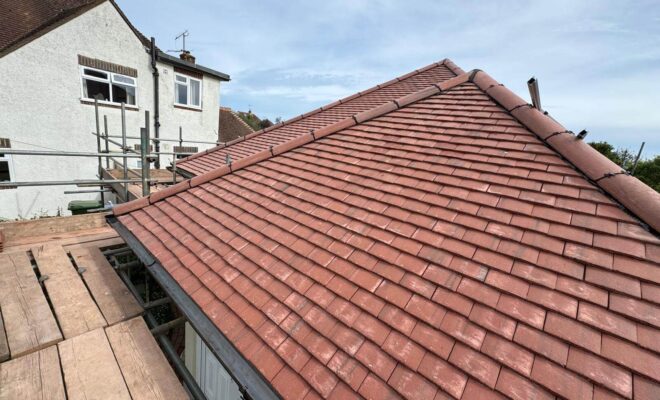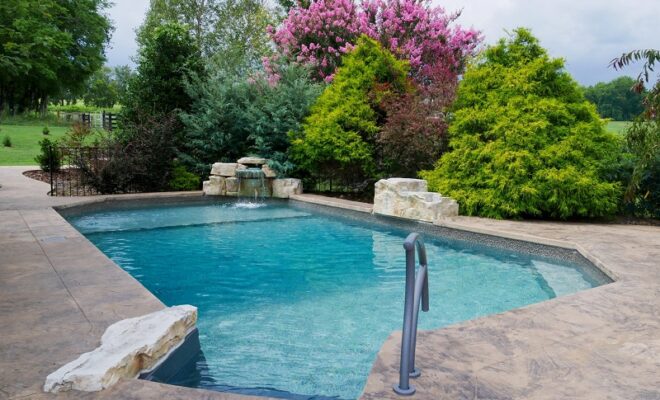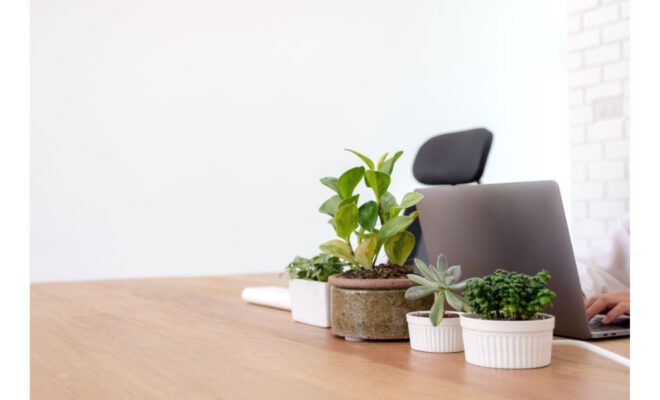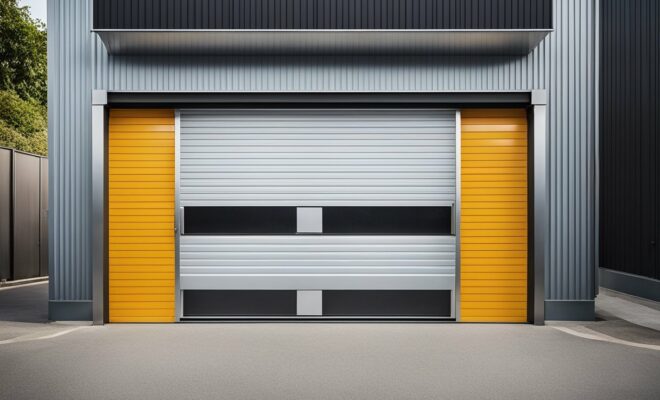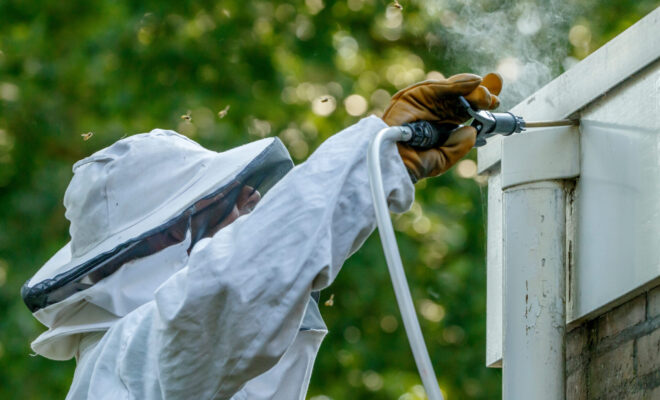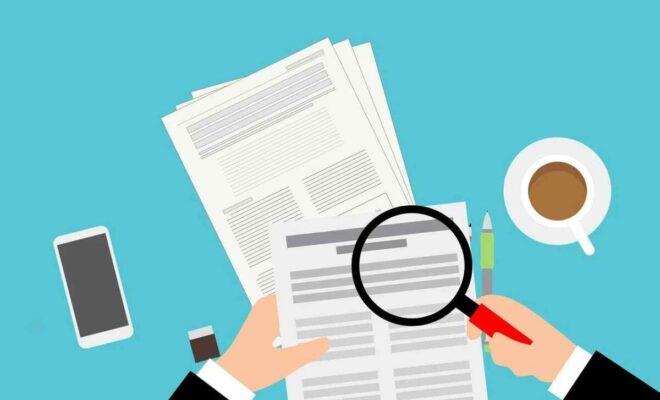Happy Fish Need the Right Pond Setup
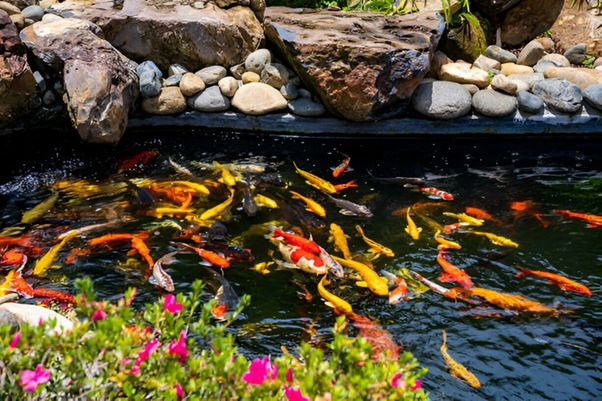
Deciding to include fish in your backyard pond leaves you wondering about its maximum fish capacity. If you want to create a protective environment where fish prosper, you need this guideline. This guide helps users find suitable fish numbers for their pond by focusing on fish health and stability.
Your fish harbour better health inside your backyard pond so long as you establish a flawless environmental setting. From water volume to filtration, every detail matters. High-quality equipment like Burtons Aquatics drum filters can make maintenance easier while keeping water crystal clear.
Experts like That Pond Guy emphasize that overcrowding is the number one mistake pond owners make – their team specializes in creating balanced aquatic ecosystems.
Calculate Your Pond’s True Capacity
The golden rule:
- For every ten litters of water, 1 inch of fish
- OR one 6-inch fish per 100 gallons.
Example: A 10’x15′ pond with 1.5′ depth holds approximately 1,250 gallons.
That means:
- 12 koi (6″ each)
- OR 125 inches of smaller fish.
Always account for:
- Rocks/plants reducing water volume
- Future fish growth (koi can reach 24+ inches!).
Essential Factors for Fish Comfort
1. Filtration Power
- Undersized filters = toxic water
- Burtons Aquatics drum filters excel at waste removal
- Match filter capacity to fish loads PLUS 20% extra.
2. Oxygen Levels
- More fish = more aeration needed
- Add waterfall or air pump if fish gasp at surface.
3. Surface Area Matters
Wider ponds exchange oxygen better than deep, narrow ones. Ideal minimums:
- Goldfish: 100+ gallons, 24″ deep
- Koi: 250+ gallons per fish, 3’+ deep.
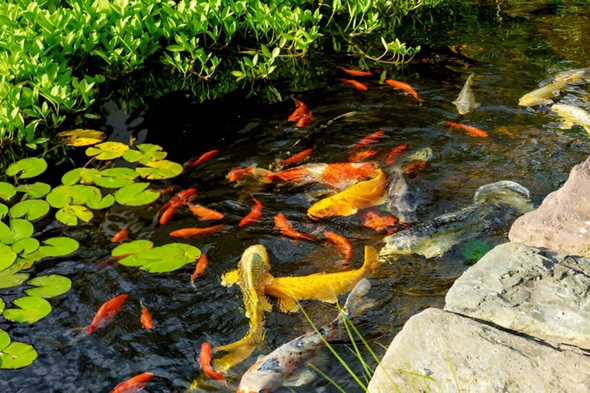
Smart Stocking Strategies
Start Slow
- Add fish in phases over months
- Allows beneficial bacteria colonies establish.
Mix Species Carefully
- Avoid pairing fast breeders (goldfish) with delicate fish
- Quarantine new fish for 2 weeks.
Watch for These Red Flags
- Fish rubbing against rocks (parasites)
- Clamped fins or lethargy (poor water quality)
- Sudden algae blooms (overfeeding/overstocking).
Maintenance for Healthy Fish
Weekly
- Test ammonia/nitrite levels
- Clean filter media (gentle rinse in pond water).
Seasonally
- Partial water changes (20-30%)
- Trim overgrown plants
Pro Tip: That Pond Guy recommends installing a bottom drain during construction – it makes cleaning 80% easier!
How to Upgrade an Overcrowded Pond
- Increase Filtration – Add a secondary filter or upgrade to a larger model
- Enhance Aeration – Install a dedicated air pump
- Reduce Population – Rehome some fish or expand the pond.
By prioritizing your fish’s needs from day one, you will enjoy a thriving, low-maintenance pond for years. Remember – patient stocking leads to healthier fish and clearer water!
Healthy Fish Thrive in Perfect Pond Conditions – Learn how balancing population, filtration and space creates an ideal underwater home.
Final Thoughts
When everything inside the pond aligns correctly, it creates an environment of beautiful, thriving conditions. Combining fish population management with proper filtration systems, suitable space, and sufficient oxygen will ensure your pond’s sustainable growth.
A properly spaced environment will create a thriving aquatic ecosystem that avoids all overcrowding problems. The correct setup combined with some patience ensures your fish will maintain health and happiness while giving you daily pleasure in watching them thrive.

